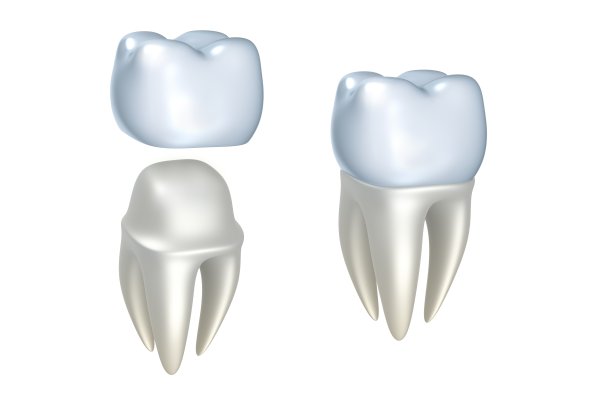Are Dental Crowns and Dental Caps the Same?

Many patients want to know what the difference is between dental crowns and dental caps. In fact, they are different names for the same type of tooth restoration. Dental crowns or caps are tooth-shaped coverings that are placed over teeth to strengthen them or improve their appearance.
Dental crown placement and types
Dental crowns are used to cap both primary and permanent teeth in a variety of situations to restore a tooth's shape and function. They encase the entire part of the tooth that is visible above the gum line. The placement of a dental crown can allow patients to keep and protect their own teeth.
Primary teeth
When a younger teen with a mix of baby and adult teeth, breaks a tooth or has a cavity, the dentist may recommend the placement of a crown because it is important that primary teeth are not lost early. Baby teeth act as placeholders for permanent teeth and help guide them into position.
Permanent teeth
Permanent teeth commonly receive dental crowns to repair large cavities or repair a broken tooth. They can also be placed over teeth that have been severely worn down. Crowns may be used to cover discolored teeth.
Types of crowns
A dental crown can be made from several types of materials depending on personal preference and where it will be placed. They are sometimes colored to blend in with the teeth. These are common materials:
- Stainless steel crowns are premade crowns mainly used on permanent teeth as a temporary measure. Stainless steel crowns are generally recommended for baby teeth because of their durability.
- All-metal crowns are dental restorations that are made using gold, platinum or other metals. All-metal crowns rarely break and generally last longer than other types.
- Porcelain-fused-to-metal crowns have a layer of metal covered by a porcelain surface. These are strong crowns and can be colored to match the patient's smile.
- Resin dental crowns are inexpensive, can achieve a natural tooth color and are free of metals. However, resin crowns can wear down quickly and are more prone to fractures.
- All-ceramic dental crowns are used for both front and back teeth and can be color-matched to the other teeth.
Dental crown procedure
The procedure to place a dental crown usually occurs over two visits once it has been decided that a tooth needs one. During the first visit, any tooth decay will be treated. Next, the tooth is reshaped and impressions are created using a paste or putty. These impressions are sent to a lab where a crown will be made and color-matched if applicable.
A temporary premade crown will be placed until the permanent one is completed. At the second appointment, the temporary crown is removed. The dentist will then apply dental cement, fix the permanent crown into place and evaluate its fit.
Conclusion
Whether they are called dental crowns or dental caps, these dental fixtures are a secure way of restoring teeth. However, they are still susceptible to cavities. To care for new crowns, be sure to brush, floss and see the dentist for regular exams and cleanings.
Request an appointment here: https://aestheticsmiles.com or call Aesthetic Dentistry of Noe Valley at (415) 493-9143 for an appointment in our San Francisco office.
Check out what others are saying about our services on Yelp: Read our Yelp reviews.
Related Posts
Clinical research shows that Invisalign® can correct gaps in your teeth. Even so, the dentist will determine if your case is a fit for this type of treatment. A successful correction can result in a straight and gapless smile. Here are the details about correcting dental gaps with Invisalign.Dental gaps can cause dental health problems.…
Those seeking a straighter smile who would like to avoid treatment with braces have another option, thanks to Invisalign®. This clear aligner system discreetly and conveniently addresses many tooth alignment issues. Though many prefer Invisalign to braces, for this reason, these clear aligners are not for everyone. If you are considering Invisalign, here is an…
The journey toward a straighter smile is exciting but comes with a crucial decision: Invisalign® or traditional braces? Both options have advantages, and understanding their differences can help you make an informed decision about your teeth-straightening treatment goals. It is not only about achieving a straighter smile but also about finding the path that best…
A dental filling is important in achieving good dental health and a painless smile. This dental restoration can seal the tooth and protect it from further decay. Knowing when to get fillings can help you achieve your smile goals earlier. Here are the signs your tooth may need a dental filling right away.Pain often develops…


